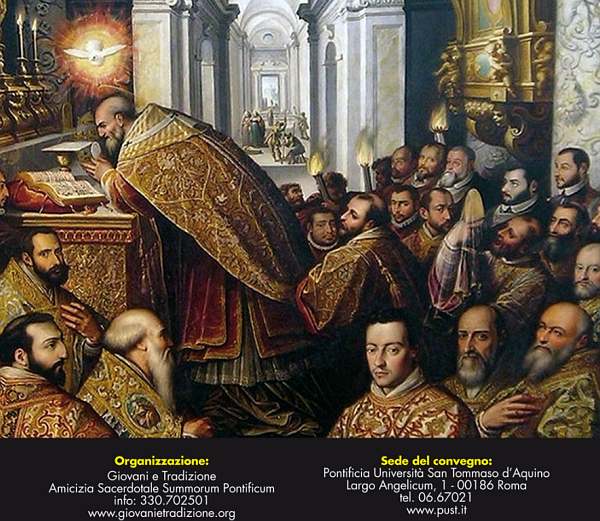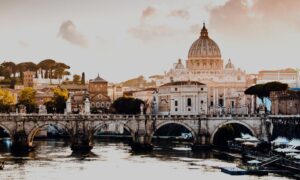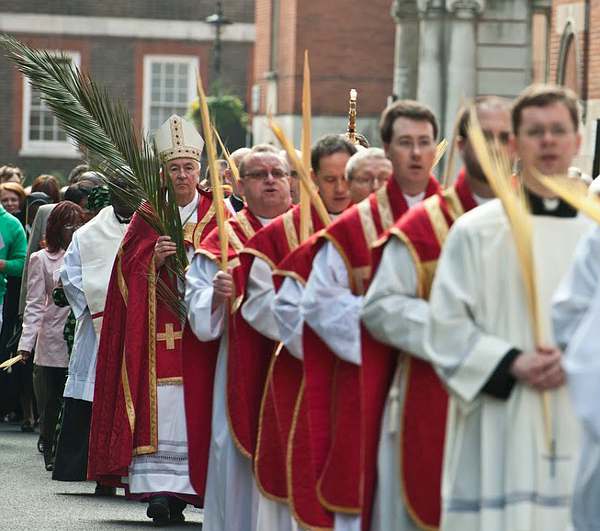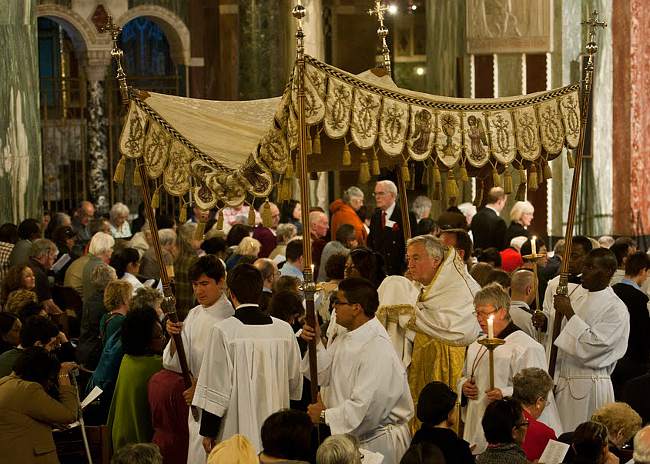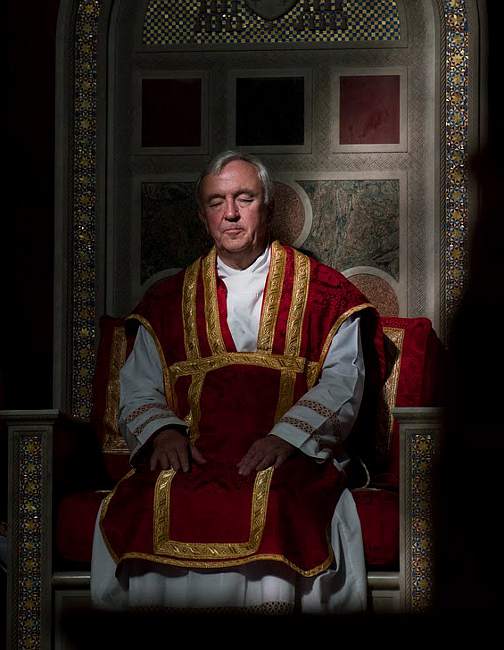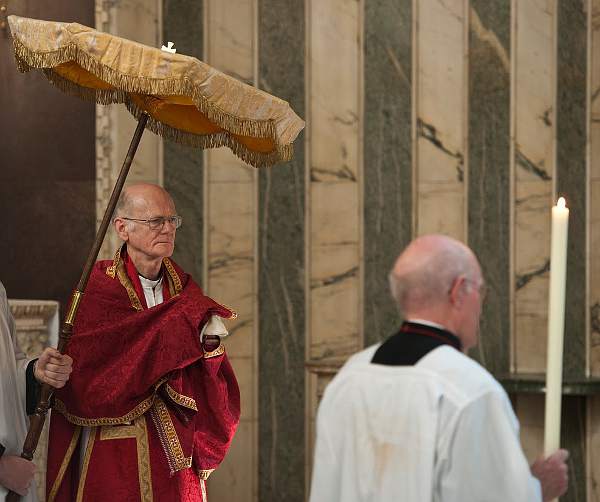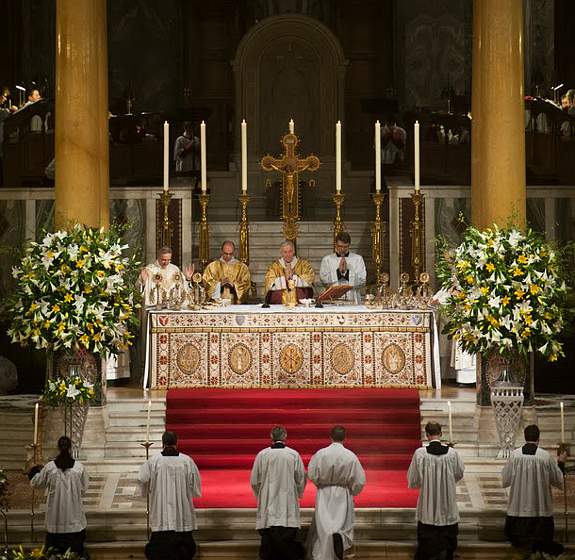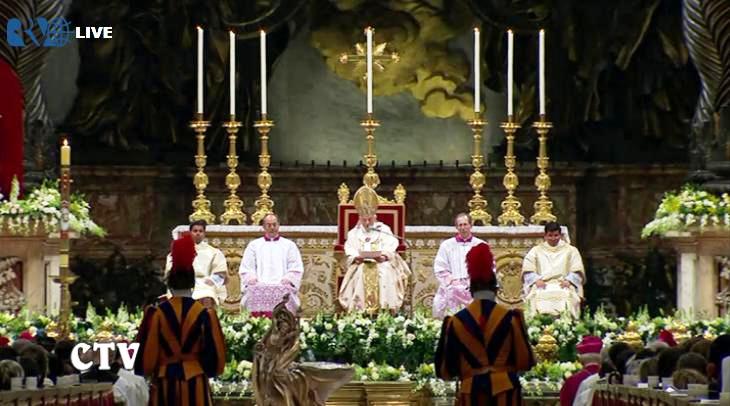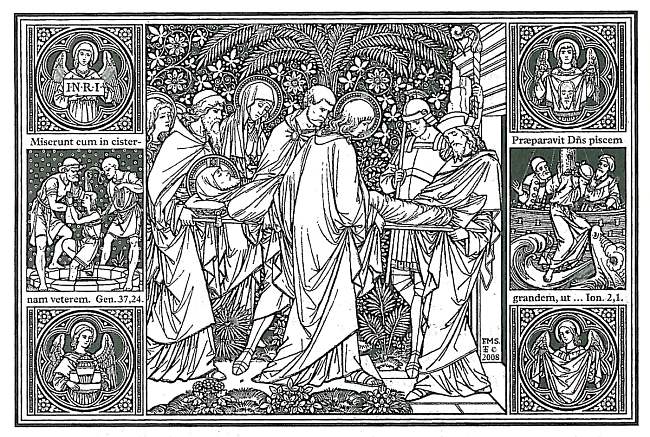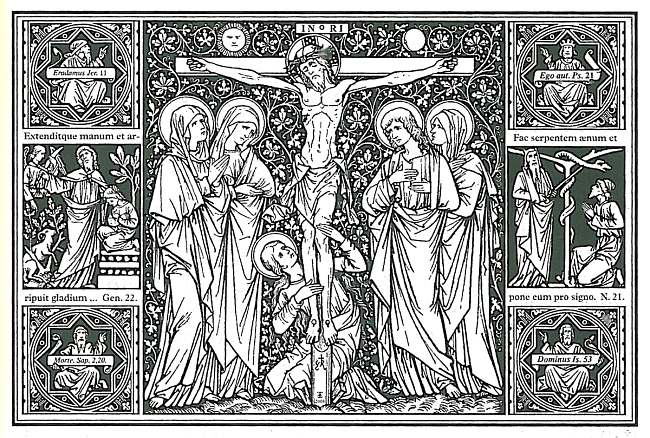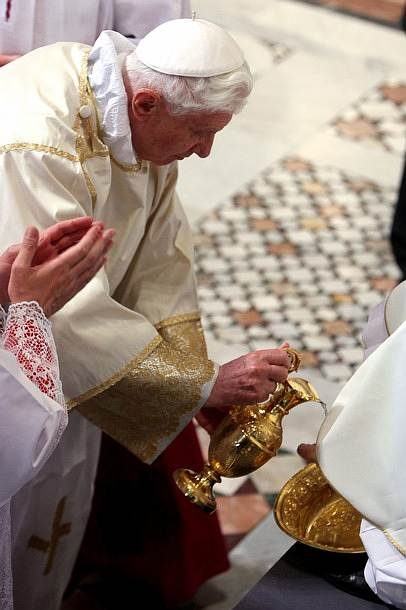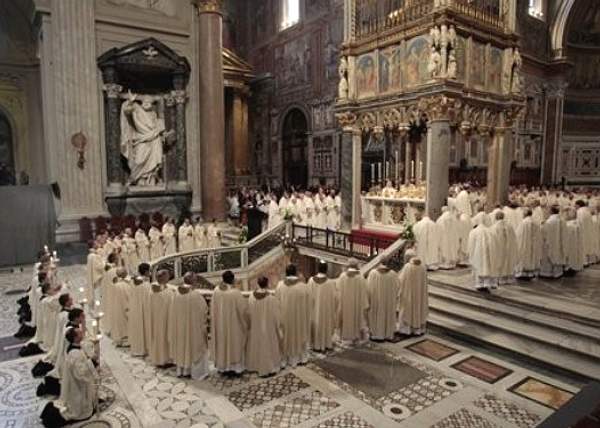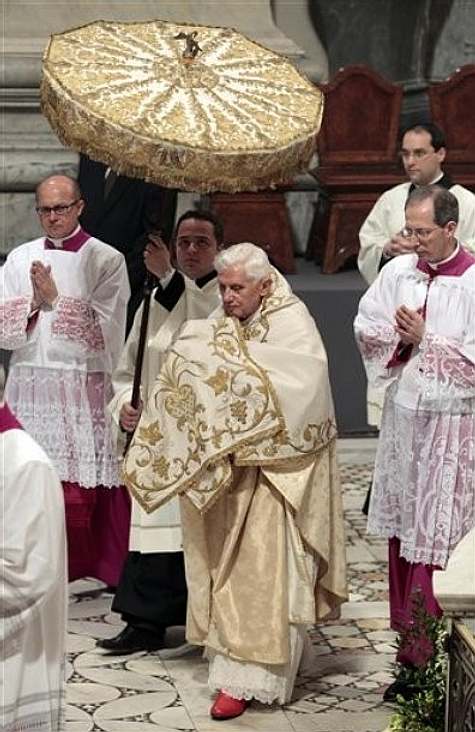I dag leser vi følgende evangelietekst i messens ekstraordinære form, fra Johannes 20:
Jesus viser seg for Maria Magdalena
11 Men Maria ble stående og gråte like utenfor graven. Gråtende bøyde hun seg fram og så inn i graven, 12 og fikk se to engler i skinnende hvite klær som satt der Jesu legeme hadde ligget, en ved hodet og en ved føttene. 13 «Hvorfor gråter du, kvinne?» sa de. Hun svarte: «De har tatt min Herre bort, og jeg vet ikke hvor de har lagt ham.» 14 I det samme snudde hun seg og så Jesus stå der, men hun skjønte ikke at det var han. 15 «Hvorfor gråter du, kvinne?» sier Jesus. «Hvem leter du etter?» Hun trodde at det var gartneren, og sier til ham: «Herre, hvis du har tatt ham bort, så si meg hvor du har lagt ham, så skal jeg ta ham med meg.» 16 «Maria,» sa Jesus. Da snudde hun seg og sa til ham på hebraisk: «Rabbuni» – det betyr mester. 17 Jesus sier til henne: «Rør meg ikke, for jeg er ennå ikke fart opp til Faderen. Men gå til mine brødre og si til dem at jeg farer opp til ham som er min Far og Far for dere, min Gud og deres Gud.» 18 Da gikk Maria Magdalena av sted og sa til disiplene: «Jeg har sett Herren!» Og hun fortalte dem hva han hadde sagt til henne.
I de tradisjonelle tidebønnene (som jeg bruker nå) tas denne teksten opp under Matutin, og her siteres pave Gregor den store slik:
Lesning 1
Mary Magdalene, a woman in the city, who was a sinner, through love of the truth washed away by her tears the befoulment of her sin, and the word of the Truth was fulfilled which He spake : Her sins, which are many, are forgiven : for she loved much. Luke vii. 47. She that had remained cold while she sinned, became burning when she loved. For after that she had been to the Sepulchre, and had not found there the Body of the Lord, and had believed that It had been taken away, and had told His disciples, they came and saw, and thought it was even as the woman had said : and it is written Then the disciples went away again unto their own home but Mary stood without at the sepulchre, weeping
.
Lesning 2
In connection with this matter, we ought to ponder what great store of love there was in that woman’s heart, who, when even His disciples were gone away, could not tear herself from the’ grave of the Lord. She sought Him Whom she had not found there, and as she sought, she wept, and the fire of love in her heart yearned after Him, Who she believed had been taken away. And so it came to pass that she, who had lingered to seek Him, was the only one who then saw Him, since the back-bone of a good work is endurance, and the voice of the Truth Himself hath said : He that endureth to the end shall be saved.
Lesning 3
As Mary wept there, she stooped down and looked into the Sepulchre. It was but a little while and she had seen how the Sepulchre was empty, and had told that the Lord was taken away. Why then should she stoop down and look in again? But she loved Him so well, that one look was not enough; the energy of her affection constrained her to search again and again. She began by searching and not finding; but she endured in her search, and, behold, it came to pass that she found. And this was done that our own longings for Christ’s presence might be taught to expand, and know that as they expand they will meet with Him to Whom they aspire.
